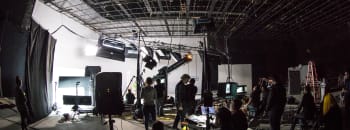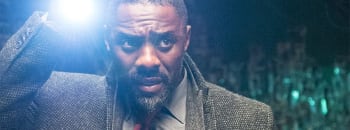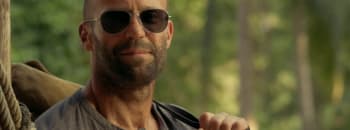Sky's Code 404 case study: Cracking the Code
KFTV talks to Covid supervisor Maja Wlodarczyk about the procedures and protocols that have been put in place to produce the Sky 1 series
By Chris Evans 25 Sep 2020
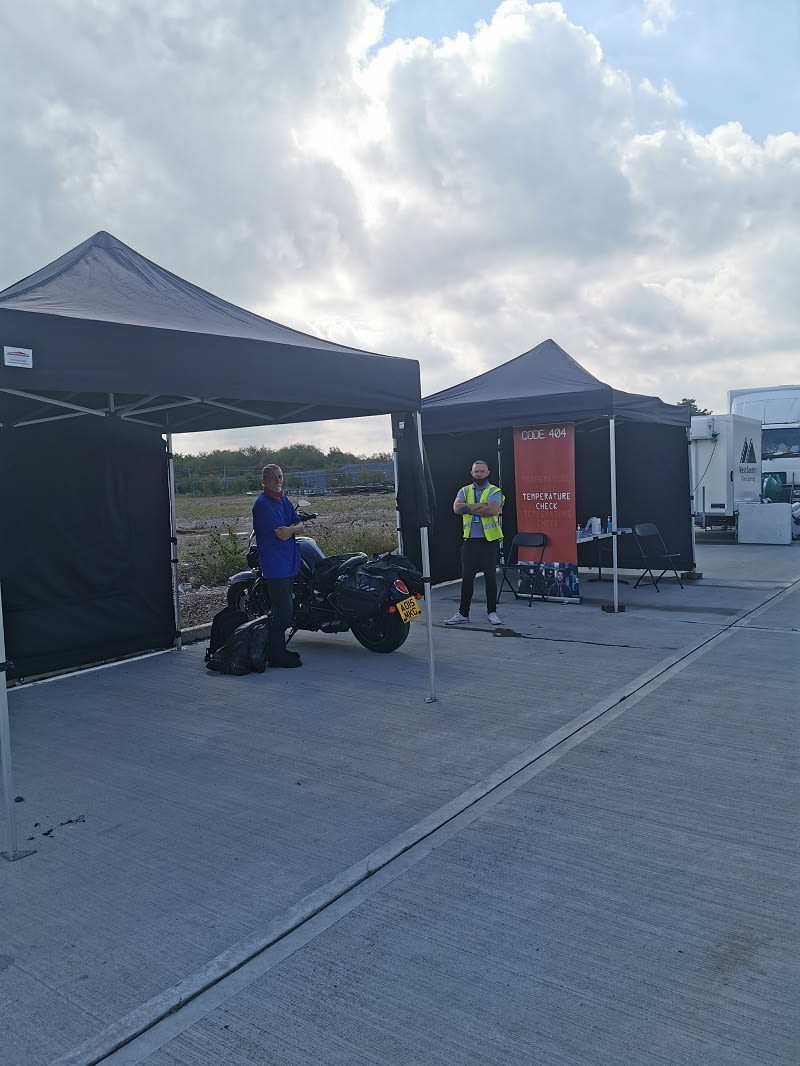
Hidden beneath Islington Green under a Waterstone’s book shop is Collins Theatre, originally constructed as an Elizabethan courtyard-style venue beneath the Collins Music Hall, where Charlie Chaplin once entertained audiences.
The unused theatre has been hosting Stephen Graham, Daniel Mays and the rest of the cast and crew of Sky’s popular comedy series Code 404 across August and September.
Among the masked crew is Maja Wlodarczyk, Covid supervisor for the production, who has been helping to orchestrate proceedings and protocols.
“It’s a working theatre, but never opened, so an ideal space, although we had to install temporary ventilation, ways in and out, signage, sanitisation stations, more toilets and so on. It’s been quite an undertaking,” she says. All the more so considering this was Wlodarczyk’s first assignment as a Covid supervisor.
Training up
Wlodarczyk felt sufficiently prepared to take on the task having done the Covid supervisor training course from First Option, and was able to utilise some of Sky’s own robust protocols. “Plus, I spent a lot of time on the phone with health & safety adviser Dave Sutcliffe, who had already initiated a lot of procedures and protocols,” she says.
Wlodarczyk is no novice to the production scene, having worked in the locations departments of several shows, including Riviera, also for Sky, the BBC’s Undercover and Channel 4’s Babylon. This set her in good stead as “a lot of the Covid supervisor role is logistics around setting up a location and how the floor runs, and I’ve always had safety elements at the back of my head”.
One of the most important Covid measures introduced for Code 404 was splitting cast and crew into categories: category 1 for people who could work remotely or didn’t need to be on the floor/set to do their job (such as production office, accounts and post-production); category 2 for those on the floor needed to keep the shoot going (sound, electricians, locations and so on), all of whom had to wear PPE; and category 3 for the cast and those who interacted with them (such as directors, producers, DoPs and make-up). This category needed to be tested for Covid throughout the shoot.
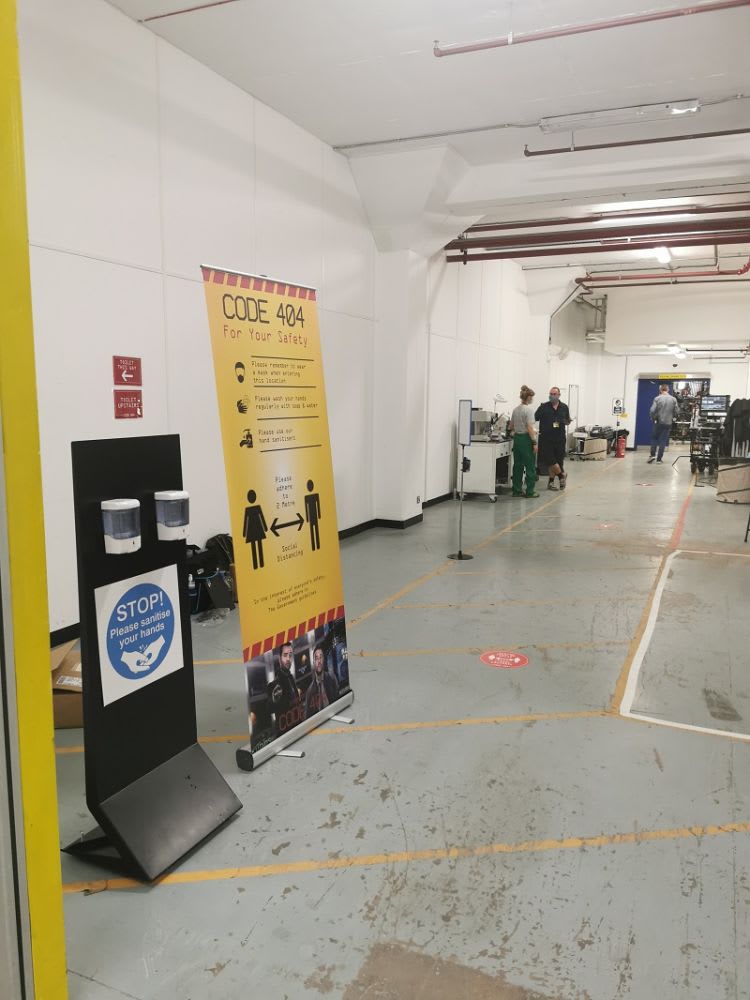
Wlodarczyk even created a testing log on an Excel spreadsheet that broke down the schedule of when everyone was on set and how many days prior to that they needed a Covid test. “I have since been asked to share it with other productions,” she says. “This is the exciting part of the job, doing and learning new things.”
Indeed, many of the practices on set were new to most. Even simple things like costume checks, which would normally be done by the standbys, had to be completed by the cast themselves initially.
Actor and crew numbers had to be reduced – by as much as half in the case of supporting artists. Even the creative vision had to be compromised a little by not using atmos. “Although there was not an industry-wide ban on using it, we didn’t feel comfortable, so we had to come up with an alternative look that was true to the show, which involved vintage lenses and [DoP David Rom’s] beautiful lighting,” says Wlodarczyk.
The catering set-up has changed too with no buffet, mostly pre-packaged food, and tables containing just two, rather than the previous six people, so there's a large lunch area.

She concedes that some of the production guidance that’s provided can be counter-intuitive, like requiring one make-up artist for each cast
member. “If you have 10 cast members on a given day, that’s a lot of make-up artists,” she says.
Some of the best-laid plans in prep and guidelines from the health & safety people also had to be adapted during the shoot. “Remaining two metres apart on the floor at all times didn’t work. We couldn’t have one department replacing another because they often work together. Doing so would have sacrificed the quality of the show or extended the schedule by 50%.
“Equally, we noticed that wearing masks proved a challenge as so many little conversations happen on set, and the camera department rely a lot on non-verbal communications.”
As a result, little adjustments had to be made, like allocating a space near set for every department to prep things like equipment checks, or for make-up to work on QTAKE.”
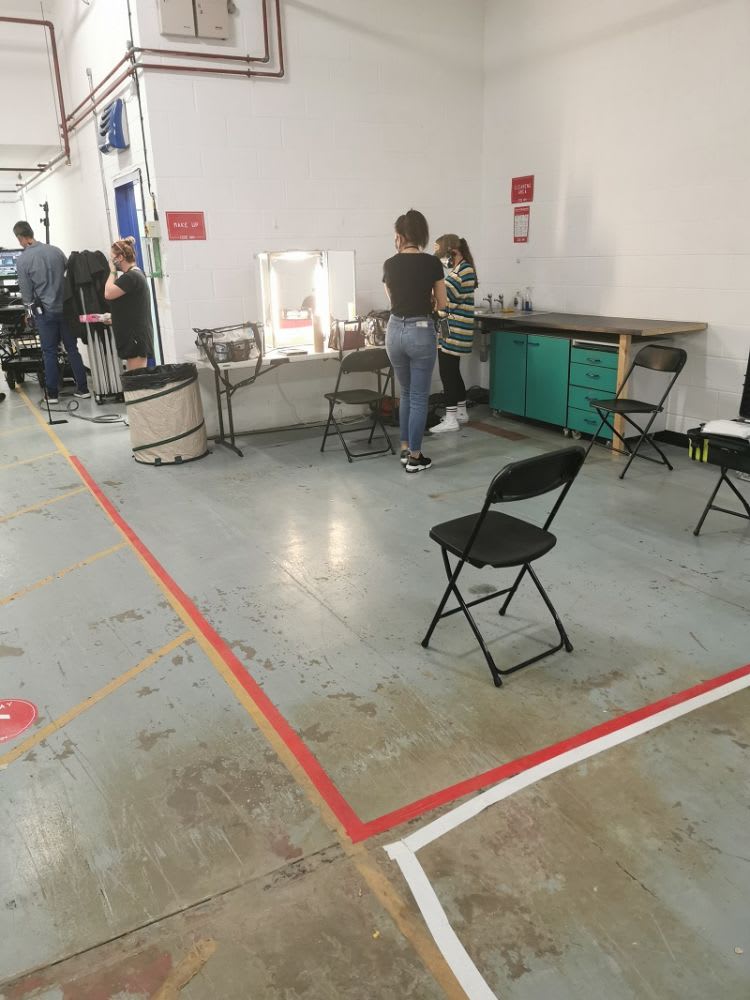
It’s been a similar story of adjustments at ExCeL London, where the production has also been filming this month, but the extra space there has helped.
“Set-ups take longer and potentially cost more money, but it’s worth it to get everything right,” says Wlodarczyk.
This is an extract from our Special Report called Covid-19 Production: Impact and Future-Proofing, which explores the roles and responsibilities of Covid-19 supervisors and their teams on film and TV sets and how the production landscape has been transformed by the virus.
Latest news & features
Featured profiles
Promote your services with KFTV
Choose from three profile types - Basic, Silver and Gold
Create ProfileWe offer a range of display advertising opportunities.
Learn More
